I’m enamored.
Two days ago I spent a bunch of time trying to photograph Forster’s Terns fishing a small pond at Bear River MBR. Terns in flight are always a challenge but these were more difficult than usual because the pond was small and surrounded by tall phrags. So, as soon as the terns got past the phrags and close enough for photos they suddenly swooped down closer to the water, which made them nearly impossible to keep in the frame. Or to reacquire after I’d lost them in the frame.
My strong preference for photos that didn’t have sky backgrounds didn’t make it any easier. But I got some shots I like, including some of my first “fresh juvenile”, which I think is a stunningly attractive bird.
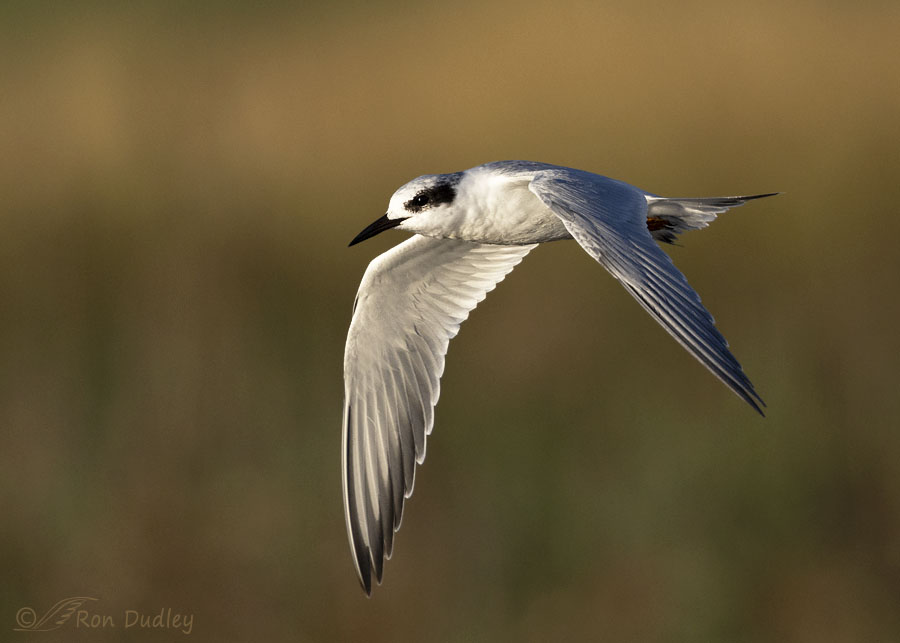
1/8000, f/6.3, ISO 800, Canon R5, Canon EF500mm f/4L IS II USM + 1.4 tc, not baited, set up or called in
There were about 20 Forster’s Terns fishing the pond and all but one of them were adults in nonbreeding plumage. I sure like backgrounds similar to this one better than plain sky backgrounds. Invasive phrags cause a lot of problems for our refuges and our birds but when warm, early morning light hits them, magic can happen in the backgrounds of our photos.
I probably spent too much time trying to photograph terns hitting the water in a dive after a fish or coming out of the water immediately after a dive. I never got any good photos like that but…
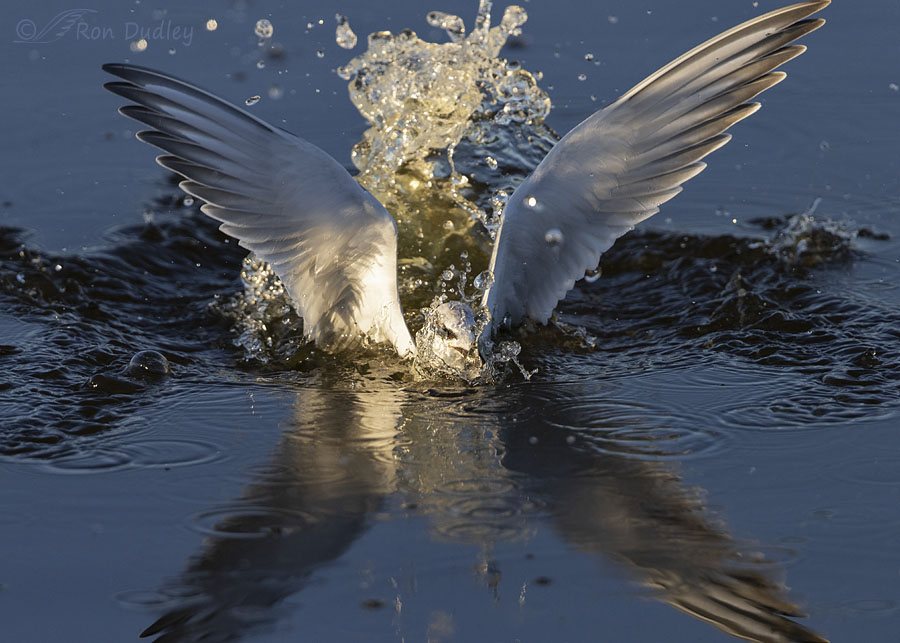
1/4000, f/5.6, ISO 1600, Canon R5, Canon EF500mm f/4L IS II USM + 1.4 tc, not baited, set up or called in
I did get a few interesting ones. This one was taken immediately after the tern hit the water. It’s high contrast and I clipped wings in both the bird and its reflection, but it still grabs my eye.
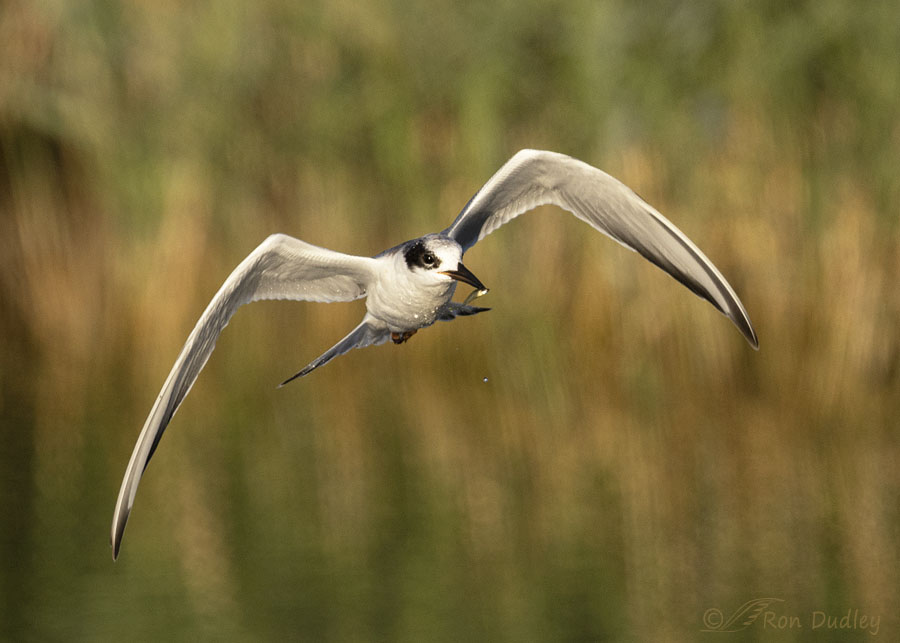
1/5000, f/6.3, ISO 800, Canon R5, Canon EF500mm f/4L IS II USM + 1.4 tc, not baited, set up or called in
I was a little surprised by the small size of the fish they were catching. In my photos I could see about a half dozen fish they caught and most of them were even smaller than this one. Only one was larger but it wasn’t larger by much.
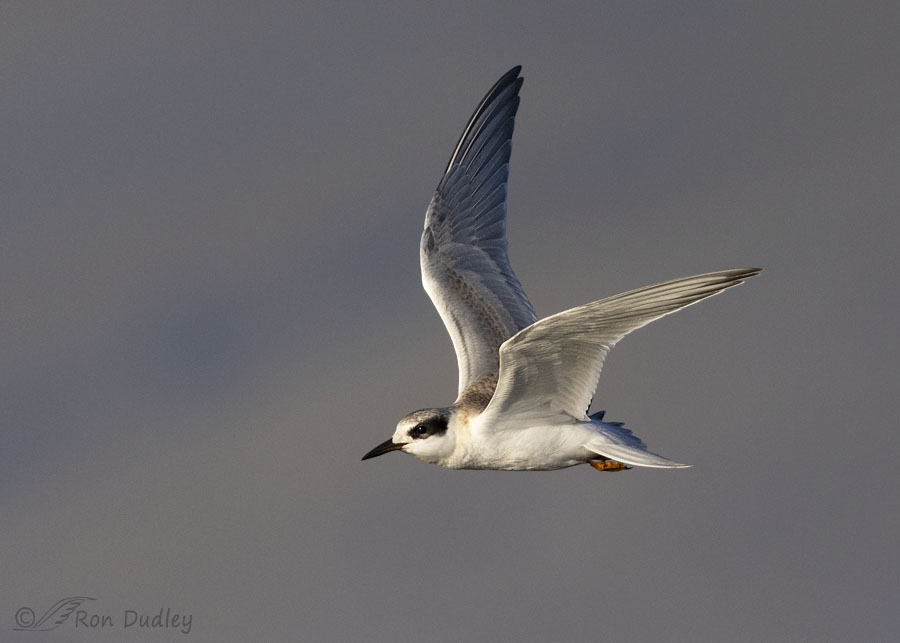
1/8000, f/6.3, ISO 800, Canon R5, Canon EF500mm f/4L IS II USM + 1.4 tc, not baited, set up or called in
This is the “fresh juvenile” I became so enamored with. At this young age, juveniles have ginger-brown markings on their head, back and scapulars but by late summer and early fall those colors disappear quickly, turning to whitish and gray due to fading and wear.
We only get a hint of those ginger-brown colors in this shot but…
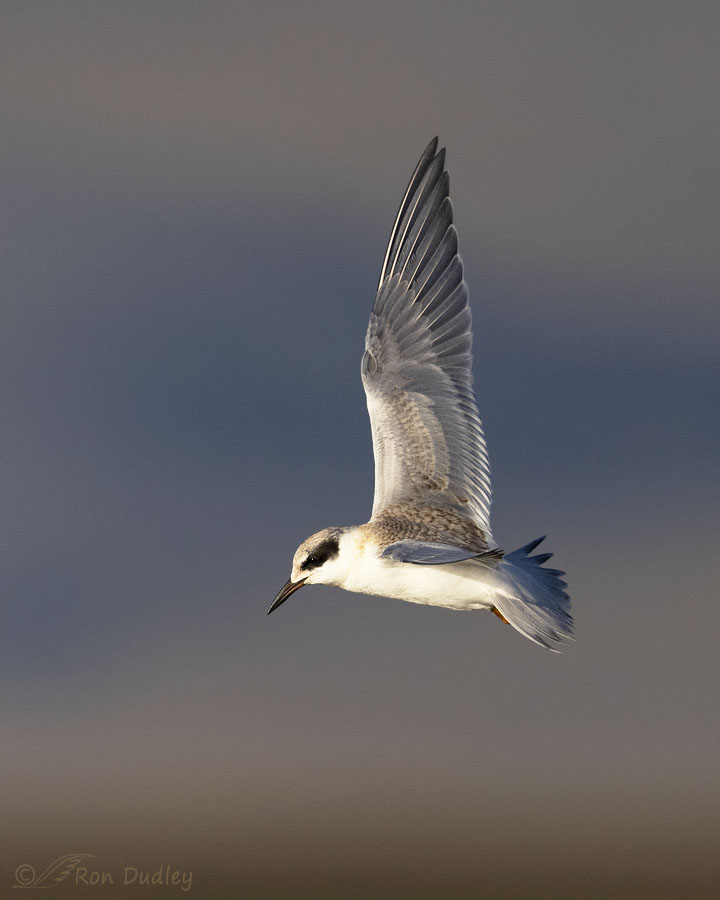
1/8000, f/6.3, ISO 800, Canon R5, Canon EF500mm f/4L IS II USM + 1.4 tc, not baited, set up or called in
we see more of them in this one.
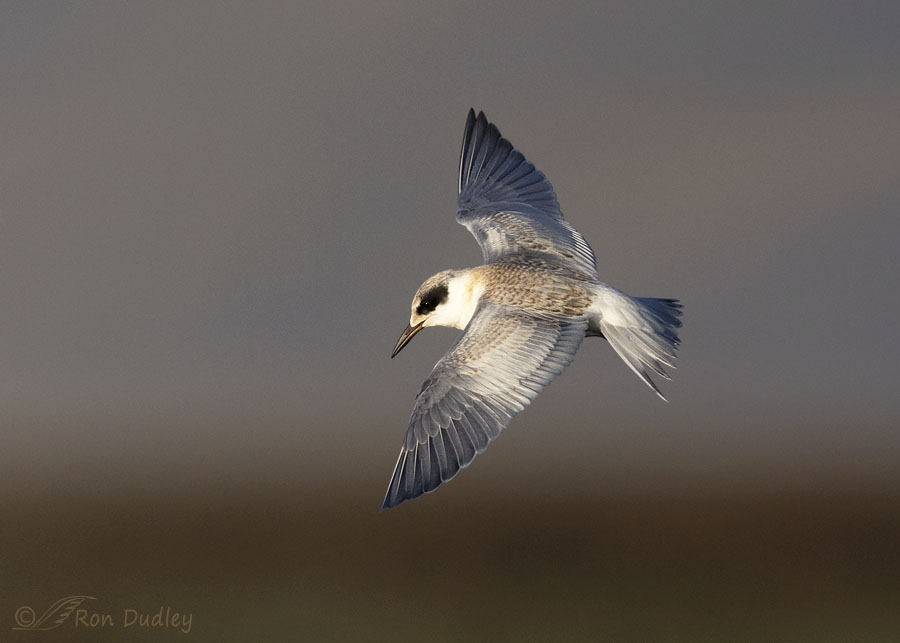
1/8000, f/6.3, ISO 800, Canon R5, Canon EF500mm f/4L IS II USM + 1.4 tc, not baited, set up or called in
This is the best shot I got to reveal those dorsal colors and patterns of that single fresh juvenile. I wish it had been closer but birds have a habit of not cooperating that way.
I think this fresh juvenile is the most attractive bird I’ve ever photographed in Laridae, the family of seabirds that includes gulls, terns and a few others.
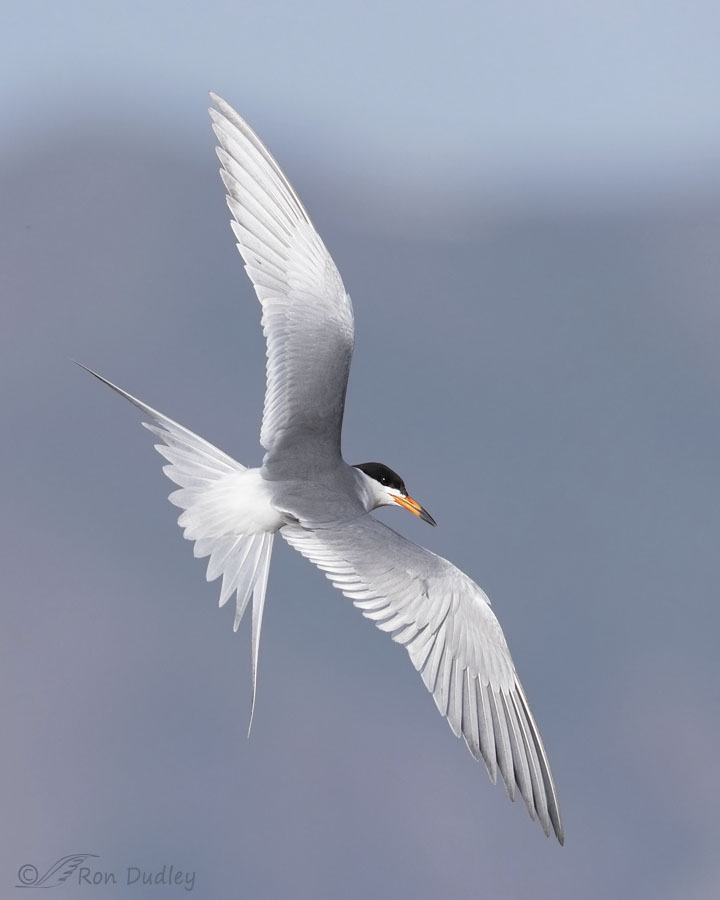
This is an older photo of an adult Forster’s Tern. I’m including it because it shows the bird’s dorsal surfaces so well, allowing the viewer to appreciate the dramatic differences between an adult in breeding plumage and a fresh juvenile.
Ron


Wonderful images – the last two are outstanding.
Thanks, Gary.
What an enchanting series. Thank you. Fresh indeed, and I do love that splash shot. Clipped wings or not.
Thanks, EC.
Love the silkiness of the wings! Excellent shots Ron – thx for including the splash shot!
Thank you, Kathleen.
Gorgeous, all! The non-breeding plumage is so different – they lose the orange in their bills, as well as their black caps. And the juvie’s coloring is so beautifully subtle. Thank you for capturing it!
I’m glad you like them, Carolyn. Thanks.
Agreed: pretty bird! I especially liked the “plunge” photo. It’s so… so… dynamic. Great captures, all, Ron. Thank you.
Thank you, Ellen.
Entertaining group of photos as usual! I especially love the 2nd from last photo of the juvenile showing the brown back markings. It’s a beauty!
That’s my favorite photo too, Joanne. I just wish I’d been closer when I took it.
Tern photo hitting the water is spectacular! It is a magical photo.
Take Care,
Kaye
Thanks, Kaye. Glad you like it. I almost didn’t include it but I’m glad I did.
These are excellent! A species I have never seen.
Thanks, Bruce.
Whoa! That’s a pretty bird.
Agreed.
The juvenile is a handsome bird — never really noticed that. You got excellent shots showing the juvenile plumage. So interesting to see!
I’m glad you agree about the juvie, Kathryn. That bird sure got my attention.
Splendid detail and composition. The splashdown photo is amazing.
Thank you, Kenneth.
Love that last one before your older one that I do remember. Beautiful both. That hitting the water would be a contest winner were it not for the clipped wings. Great photo. We have some Caspian’s here now – will have to check to see if any Forsters.
Everett, for some reason I haven’t seen a single Caspian this year. Maybe they’re all in your neck of the woods…
WOW! Beautiful shots all! 🙂 REALLY like #2 with the “frozen” motion of the water, the head still showing and the reflection. The “fresh juvenile IS a beautiful bird…… 🙂
Judy, I’m surprised I’d never photographed a fresh juvie before. Or maybe even seen one. If I ever have seen one, I didn’t notice it.
Great work as usual Ron. Thank you for all the pleasure and information.
Much appreciated, Burrdoo.